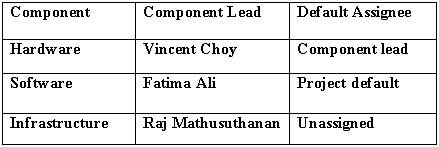At ValidExamDumps, we consistently monitor updates to the Atlassian ACP-620 exam questions by Atlassian. Whenever our team identifies changes in the exam questions,exam objectives, exam focus areas or in exam requirements, We immediately update our exam questions for both PDF and online practice exams. This commitment ensures our customers always have access to the most current and accurate questions. By preparing with these actual questions, our customers can successfully pass the Atlassian Managing Jira Projects for Cloud Exam exam on their first attempt without needing additional materials or study guides.
Other certification materials providers often include outdated or removed questions by Atlassian in their Atlassian ACP-620 exam. These outdated questions lead to customers failing their Atlassian Managing Jira Projects for Cloud Exam exam. In contrast, we ensure our questions bank includes only precise and up-to-date questions, guaranteeing their presence in your actual exam. Our main priority is your success in the Atlassian ACP-620 exam, not profiting from selling obsolete exam questions in PDF or Online Practice Test.
Your project is configured as shown.


An issue is created with all three components selected: Hardware, Software, and Infrastructure. The assignee is set to Automatic. Who will be automatically assigned to the issue?
When multiple components are selected on issue creation, Jira cannot determine a single default assignee if each component has a different assignee rule. In this case:
Hardware Component lead (Vincent Choy)
Software Project default (Alana Grant)
Infrastructure Unassigned
Since the assignee logic conflicts, Jira defaults to Unassigned to avoid ambiguity.
A team needs a board that meets these requirements:
All issues can be moved across the entire workflow on a single view of the board.
Issues can be worked in a continuous flow without start and stop dates.
Which board configuration meets the requirements?
A Kanban board without backlog displays all issues on a single view and supports a continuous workflow without start and stop dates. This setup is ideal for teams using a continuous delivery process, allowing issues to move freely across the entire workflow.
Teams using Project A and B currently use their own respective Scrum boards.
They must now work together on the same products and issues and in the same sprints.
You created a new Scrum board based on this filter:
project in (A,B) ORDER BY Rank ASC
You must also check two settings to make sure the teams can access and use the new board.
Identify the two settings. (Choose two.)
Sharing on the board filter: The board filter must be shared with all users who need access to the board; otherwise, they won't be able to view or use it.
Project permissions: Users must have the necessary permissions (such as Browse Projects and Manage Sprints) on both Project A and Project B to view issues and manage sprints on the new shared board.
You need to configure automatic issue assignment in a company-managed project.
Assignment depends on a value selected by users during issue creation.
Users should be able to select only one value.
Identify two elements that can be configured together to meet this need. (Choose two.)
Radio Buttons custom field: Ensures users select only one value during issue creation, which can then drive assignment logic.
Automation rule: Can be configured to automatically assign issues based on the selected value in the custom field, enabling dynamic and rule-based assignments.
In the DEV project, users need to change statuses:
on individual issues, one at a time
on collections of issues, all at once
Which three permissions do they definitely need? (Choose three.)
Make Bulk Changes: Required to update the status of multiple issues simultaneously.
Transition Issues: Allows users to move issues through the workflow (i.e., change their status).
Browse Projects: Grants visibility into the project, which is necessary to view and act on issues.